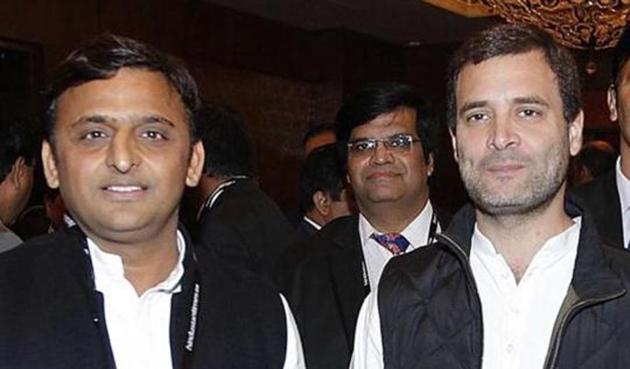UP election: Why the Samajwadi Party-Congress marriage could be brief and rocky
If they manage to foil the BJP’s bid for power in UP and form the government, it would be on edge right from the beginning. Peaceful coexistence of the two traditional rivals could be possible at the cost of one or the other only.
Congress vice-president Rahul Gandhi’s decision to field his sister Priyanka to negotiate an alliance with the Samajwadi Party might have caught eyeballs in Uttar Pradesh, but this marriage of convenience between traditional rivals looks set to be brief and rocky.

For one, their objective is limited to keeping the BJP out of power in UP, with the hope of setting the momentum for 2019 general elections. If the BJP gets the better of the two on March 11 when the results are declared, the SP and the Congress could part ways almost immediately-- until another opportunity arises to bury their differences once again in the name of secularism.
If they manage to foil the BJP’s bid for power in UP and form the government, it would be on edge right from the beginning. Peaceful coexistence of the two traditional rivals could be possible at the cost of one or the other only.
In Bihar, the Congress rode piggyback on the parties that were responsible for its annihilation in the state to be on the winning side. The grand old party has since given up its organisational ambitions in Bihar to play second fiddle to its erstwhile rivals. If anti-Congressism was the cornerstone of all sorts of opportunistic alliances in the first five decades post-Independence, anti-BJPism is becoming a political ideology in the 21st century.
“The BJP got the maximum number of seats in UP (71) and also in Bihar (22). If there is any hope for us to topple it in 2019, it has to start from the Hindi heartland,” a general secretary of the All India Congress Committee told HT, explaining the reason for the party’s desperation for alliances in these two states. He maintained that these tactics were limited to states only.

The second reason for this alliance in UP becoming unsustainable after assembly elections is the conflicting ambitions on both sides. Congress leaders are wary of the SP camp’s oft-repeated assertion about the Prime Ministerial potential of its leaders-- first Mulayam Singh Yadav and now Akhilesh.
Theoretically, the alliance is expected to unite Muslims in favour of an anti-BJP formation and supplement the SP’s Yadav votebank with the Congress party’s amorphous support base among a section of the upper castes and the Dalits. Accordingly, the likely sight of chief minister Akhilesh Yadav and Rahul Gandhi sharing the dais should cast a spell on the youth in UP.
But outside the theoretical domain, there are many imponderables on the ground. Would workers of the two parties put aside their 26 years old rivalry overnight? The SP and the Congress have entered into a pre-poll alliance for the first time but they have provided tactical support to each other in the past. The Congress extended outside support to the SP government in UP and the SP returned the favour, supporting the UPA I government at the Centre. Both withdrew support in early 2007, ahead of Assembly elections. The SP accused the Centre of trying to dislodge the government in Lucknow, while the Congress cited lawlessness in the state. The SP hit the streets in 2008, accusing the Manmohan Singh government of selling India’s interests through the Indo-US nuclear deal. The party, however, made a U-turn on this issue in July the same year and saved the government by helping it to prove its majority on the floor of the Lok Sabha. But when it wanted to join the UPA II government in 2009, the Congress cold- shouldered it.
Congress leaders claimed that the pre-poll alliance in UP would be to their advantage in the long run. “By virtue of our grand alliance in Bihar, we won several seats after a gap of 20-30 years. In UP, people won’t see SP flags in 105 constituencies and it will help the Congress regain its lost base on those seats,” argued a senior Congress leader, failing to mention that the Congress flag will also not be seen ion 298 seats.
As for the advantage in Bihar, here is a candid observation from a party leader from the state:”You must be hearing what Nitish Kumar has been gaining popularity, especially among women, by imposing prohibition. Does anyone know that the Bihar excise minister is from the Congress? The party has become completely inactive. Forget expansion of the party, its support base might further shrink.”
Political scientist Suhas Palshikar says that the alliance is to the advantage of the Congress- SP combine in UP elections but does not see it contributing to the revival of the Congress, given the prevalent stasis in the organisation.





